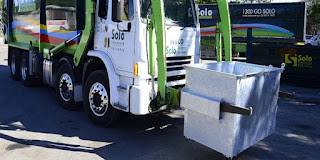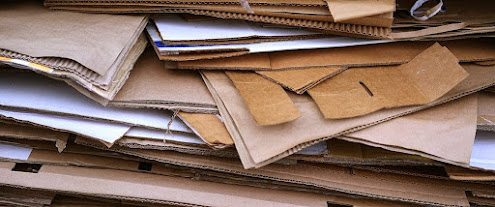The Management of Green Waste can do Wonders in Sustainability
Because it is naturally biodegradable, green waste—organic waste derived from plants and trees—distinguishes itself from other waste streams. This special kind of waste is very valuable because it can be composted and used again for a variety of purposes, including gardening, farming, and soil enhancement. To achieve sustainability, promote environmental preservation, and preserve natural resources, green waste dump Adelaide is essential.
Green waste
comes in a variety of forms, such as:
1. Yard
trimmings: Grass clippings, leaves, twigs, and small branches are among the
materials we frequently come across when maintaining our gardens. We just refer
to this as yard trimmings.
2. Food Waste:
Eggshells, coffee grounds, and fruit and vegetable scraps are a few notable
instances of food waste.
3. Plant
Debris: While maintaining gardens and yards, often flowers, seeds, stems,
weeds, etc., are dumped, and these are known as plant debris.
4. Pruning:
To extend the life of trees, we frequently trim off huge branches, which are
referred to as pruning.
5. Other
Green garbage: During lawn improvements, plant leftovers, tree limbs, and
landscape debris can all be considered other types of green garbage.
Several
crucial techniques for recycling green waste include:
1. Using
compost
Through the
natural decomposition process of composting, organic waste is broken down by
microorganisms into humus, which improves soil fertility and structure. This
environmentally friendly method improves soil and plant growth while lowering
dependency on artificial fertilisers.
2. Inaerobic
Breakdown
In the
absence of oxygen, green waste is biologically converted into digestate rich in
nutrients and methane. Microorganisms of several kinds do the process.
Feedstock preparation, anaerobic digesters, anaerobic breakdown, biogas
collection, and digestate processing are the steps in this process. This
approach has a number of advantages, including the ability to absorb methane,
divert waste, recycle nutrients, and lessen dependency on fossil fuels.
3. Generation
of bioenergy
Utilising
organic and green waste materials, such as plant waste and agricultural wastes,
bioenergy generation uses microbes to break down these components and produce
energy. Benefits include reduced greenhouse gas emissions, rural development,
lower environmental contamination, and better sustainability.
4. Sulking
Mulching is
the process of covering the soil with small pieces of green waste in order to
control temperature, prevent weed growth, and retain moisture. By keeping green
waste out of landfills, it contributes to the decrease of glasshouse gas
emissions.
To protect
the environment, green waste must be managed properly. Unfortunately, because
green waste decomposes naturally, it is sometimes thrown out carelessly. Green
waste treatment services are provided in Australia by professionals like
Adelaide Waste and Recycling Centre in order to handle this problem. These
services are available to Adelaide area businesses and residents as a
responsible means of getting rid of organic and green garbage.
The Adelaide
Waste and Recycling Centre (AWRC) is where locals and businesses in the
Adelaide area can dispose of their organic and green garbage.
Each tonne of
recycled green garbage improves the environment by preventing waste from
filling landfills. The Adelaide Waste and Recycling Centre ensures that green
and organic waste is processed and used effectively by operating in complete
conformity with Environment Protection Authority (EPA) requirements.
Upon arrival
at the North Plympton facility, the green waste is meticulously sorted to
eliminate any contaminants. After processing, the green waste is made into
quality compost and landscaping supplies, among other eco-friendly items.
Resources
that can be generated from green waste that are useful
1. Meat from
Animals
Certain kinds
of green waste can be utilised as additives for animal feed.
2. Wooden
kitchenware
Certain green
garbage can also be used to create little wooden items. For example, a tree
limb can be used to construct a playground bridge.
3. Materials
for Paper
Reprocessing
some of the green garbage might provide paper products like cardboard and
sheets.
4. Items for
gardens
You can use
the dried leaves and limbs for school and college assignments, as well as for
creating beautiful garden crafts.
In conclusion,
green waste is a useful resource because of its capacity for composting and
adaptability in gardening and
green waste Adelaide. Its sustainable
management is essential to ethical waste disposal procedures since it not only
helps the environment but also significantly contributes to the preservation of
natural resources.
.jpg)



Comments
Post a Comment